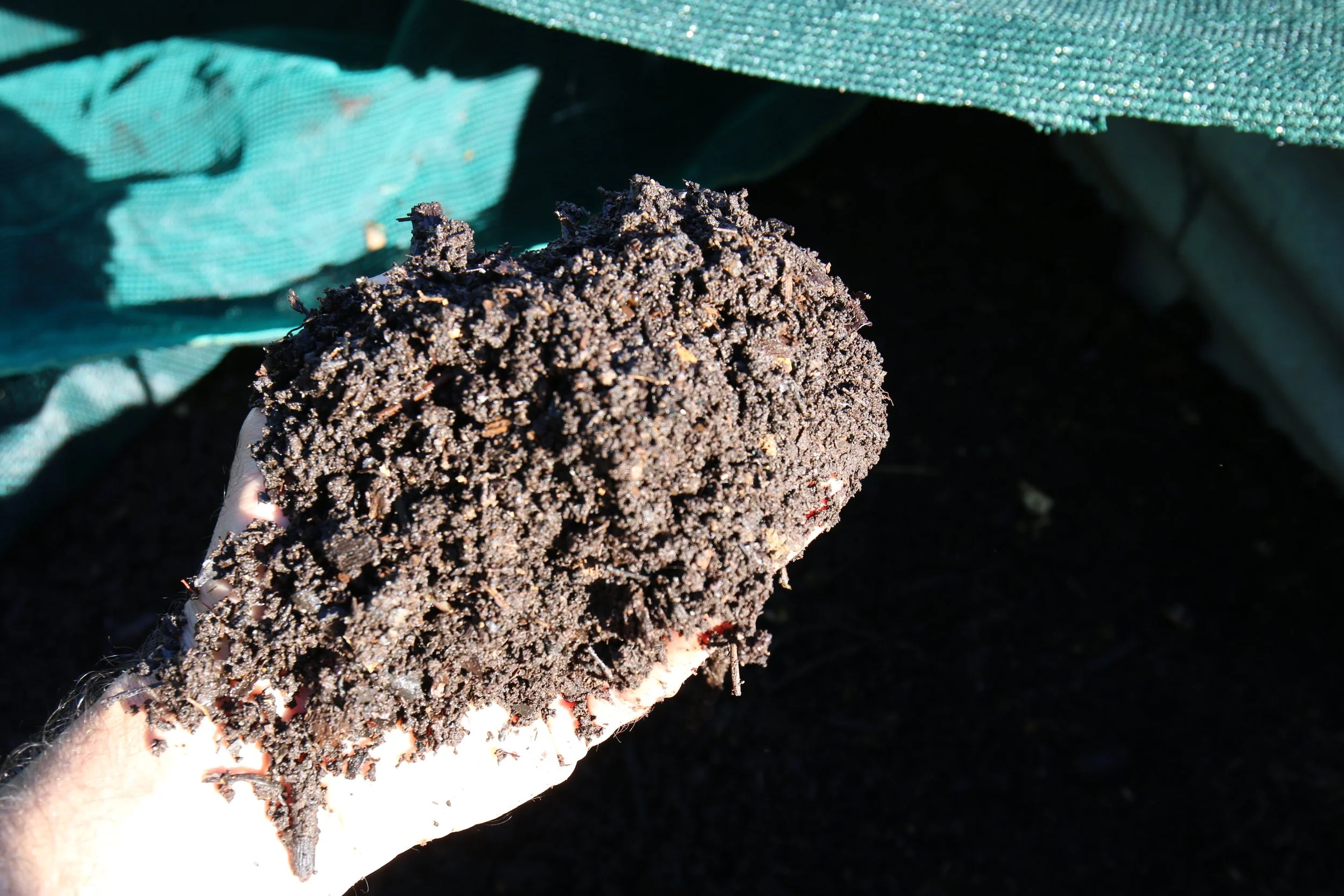The cure for your compost
It can be tempting to try to spread our compost out before it is fully cured, but there are good reasons to not rush things. Let’s have a look at how long it does take for compost to fully cure and what to look for along the way.
Some people claim to make compost in two weeks (or less!). It’s true that you can make most discernible food scraps disappear into a compost mix if your pile is cranking, but that doesn't mean it's finished.Hay is grass or other pasture plants that are cut when they are still green but (usually) before they have gone to seed. Hay is cut and baled as animal feed, the best hay being cut when the pasture is at its peak nutrition for grazing animals, this means hay has a high nitrogen content, great for animals fattening up or making milk.
When using a hot composting technique, you could be mistaken in thinking that once the pile has cooled down it's ready to use, but this is only the first phase of your compost’s journey. The all-important curing phase cannot be rushed or sped up.
Once our compost cools to below 32 degrees Celcius conditions become hospitable for worms to enter the pile and weave their magic. And once we have completed turning our piles this is when our fungi get to work breaking down the carbon-rich materials left in the pile.
Both worms and fungi improve the structure and quality of our compost considerably, and they won't be rushed, so just leave them be and let them do their thing. Our job is to be patient and keep them well hydrated. Capping our curing compost pile with a generous layer of straw will help prevent it drying out in the summer and keep them snug in the winter.
So how do we know when our compost IS ready?
Every pile is a bit different, but leaving it to rest for about three to four months after the final turn should have your compost in premium condition. Three signs to look out for are: Firstly, a noticeable reduction in the worm population (as they will move on to greener pastures, read less mature, tastier compost). Secondly, there should be very few recognisable ingredients left in our compost, apart from a few sticks. Thirdly, feel. Good quality finished compost is moist and sticky, almost greasy feeling with a crumbly texture. If you squeeze it lightly it will hold together, but it should still fall apart easily when tapped.
If you are cool composting of course you can still make super premium compost, it will just take longer. Allow a couple of extra months for cool compost piles to break things down during the active adding phase. Then the worms and fungi need at least 4 months to do their special work. All up it may be nine months or more for cool compost to fully cure. Having at least two bins, one to be feeding, while the other is resting, is important. If the volume you process is pretty high, you might find more bins helpful.
We don’t want to use our compost too early, but nor do we want to leave it so long it is past its prime. Be guided by your worm friends, they’ll let you know.
AUTHOR: JOEL MEADOWS & MIKAELA BECKLEY
Joel Meadows and Mikaela Beckley work with Yes In My Back Yard, (YIMBY), a community-scale composting initiative in Castlemaine and surrounds. Send questions or comments to hello@yimbycompost.com
This was first published in the Midland Express on the 20 February 2024

